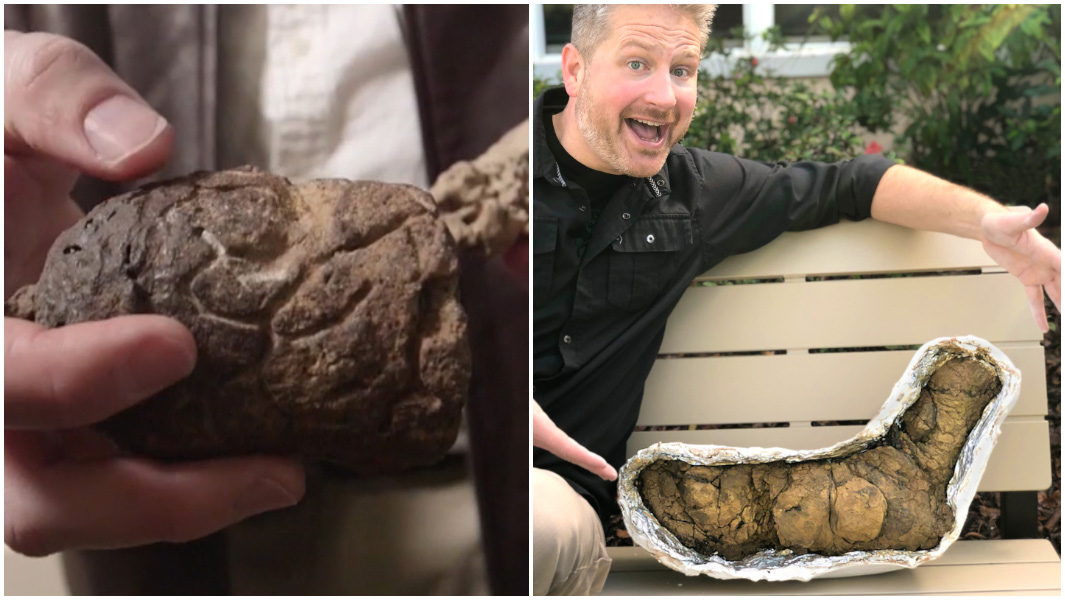Five things dinosaur poop can teach us 💩

Fossils are the remains of animals or plants that lived millions of years ago.
They’re usually made of the hard parts of animals, like their shells or bones.🦴️
But dinosaurs and other prehistoric animals also left behind another type of fossil – poop! 💩
Fossilized poops are called coprolites.
George Frandsen (USA) has the largest collection of coprolites in the world. Don’t worry, they don’t smell any more! 😝
Here’s five fascinating things that dinosaur poop can teach us...

1. The poop cycle
In the picture is a coprolite that shows evidence of insect burrowing. That means insects dug holes and tunnels in the poop and lived there! 🐜
This shows that poo played an important part in our prehistoric ecosystem.
Burrowing causes the poop to break down and create nutrients for the soil. These nutrients help other plants grow faster.🌱🌿
More plants = more food for dinosaurs. 😋
More food = more dinosaur poop! 💩

2. Prehistoric fish *might* have eaten poop
George is holding a coprolite from South Carolina, USA. It has perfect top and bottom bite marks from some type of prehistoric critter – probably a fish.
When this poop was fresh in the water, it probably gave off a strong smell that made it seem like a yummy meal. 😍
However, when the creature bit into the poop, it quickly realised that it was not a tasty meal at all and spat it out! 🤮

We know that prehistoric fish used to taste poop because of this fish fossil pictured above.
It was found in Wyoming, USA and has bits of poop stuck in its teeth! 😂
This is the only vertebrate fossil that’s ever been discovered with poop still in its mouth. 💩👅

3. Big poops = big crocs
Did you know that you can work out the length of a crocodile by looking at the size of its poop? 🐊
Because crocodiles haven’t changed much over millions of years, scientists can use the same method when fossilized poops are discovered.
George is holding one of his favourite coprolites – he even named it Precious!
Precious is a crocodile coprolite with a width of 12.5 cm (5 in).
Using the poop equation, we can work out the size of the croc who made Precious - it was 6.5m (21 ft) long! 😲

4. The shape of poop can tell us where it came from
It’s really difficult to link pieces of prehistoric poop to specific animals.
However, some lungfish and shark species have very unique spiral-shaped valves in their intestines. 🦈
That means their poop comes out in spiral shapes, which turn into spiral coprolites.
Knowing which species of creature made a specific coprolite helps us get a better idea of what prehistoric ecosystems looked like.

5. Tyrannosaurus rex didn’t waste any of its meal
This is Barnum, the largest coprolite from a carnivore ever found!
Barnum is a Tyrannosaurus rex coprolite from South Dakota, USA. 🦖💩
Tyrannosaur poops give us lots of information about the diet of this legendary dinosaur.
We can see that they crushed and swallowed lots of bones whilst eating smaller dinosaurs. It seems they enjoyed eating every part of their prey. 🦴️😋
We can also learn that they weren’t able to properly digest all of the bones as little bits can be seen all along the surface of Barnum!
Want to see more of George’s coprolite collection? Check out this video 👇